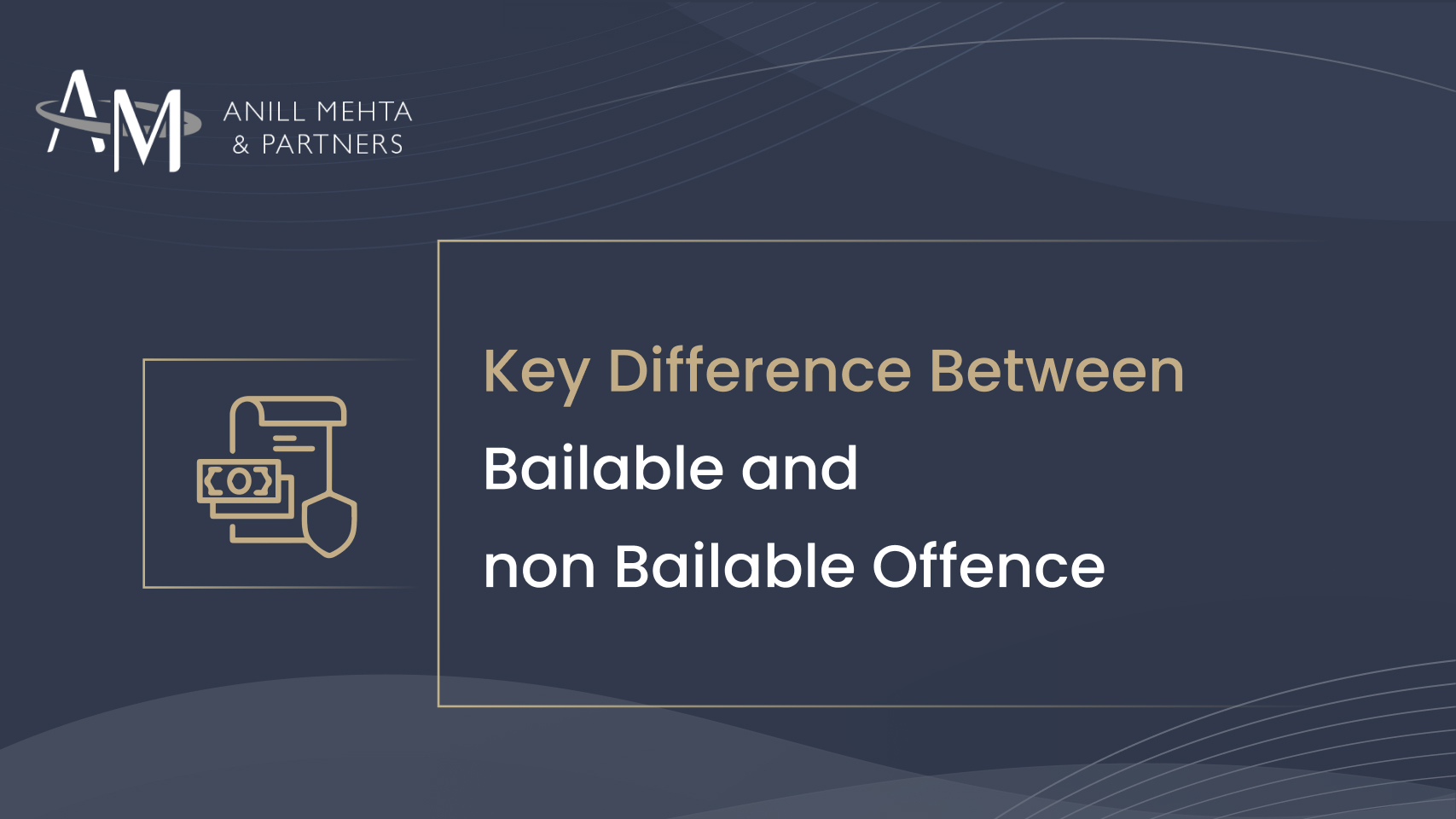All citizens need an understanding of the law. To encounter the police inquiry or to be a witness to the crime, it is essential to know one’s rights. One of the most critical aspects under Indian criminal law is the difference between bailable and non-bailable offences.
According to the data released by the National Crime Records Bureau (NCRB) in 2023, there were over 60 lakh recorded cognizable crimes, which was a drastic increase compared to 2021. Among these, a high percentage of cases were under the body of non-bailable cases, which are subject to a more rigid judicial response.
This disparity has a direct influence on the freedom of the accused. In cases where the nature of an offence determines whether someone has a right to bail or it is a privilege, the results may alter the life of an individual. In this blog, we will look at what a bailable offence or a non-bailable offence is, their differences, and how the best lawyers in Chandigarh can help protect rights.
What are Bailable Offences?
A bailable offence is when the accused can ask to be released on bail. These are minor offences that do not entail much serious harm to either society or individuals.
Features of Bailable Offences:
- As stipulated in Section 2(a) of the CrPC.
- The granting of bail is a right.
- Police officers can grant bail at the police station itself.
- Generally, these offences attract imprisonment of less than three years.
Common Examples:
- Causing Hurt – Section 323 IPC
- Public Nuisance – Section 268 IPC
- Simple Assault – Section 352 IPC
- Defamation – Section 500 IPC
What are Non-Bailable Offences?
A non-bailable offence is an offence in which bail is not a right but at the discretion of the court. These crimes are termed as such because they are taken more seriously and may be dangerous to other people or society.
Features of Non-Bailable Offences:
- Defined under IPC and handled procedurally under CrPC.
- Normally entails imprisonment of over three years.
- Often involves moral turpitude or serious bodily harm.
Common Examples:
- Murder – Section 302 IPC
- Rape – Section 376 IPC
- Dowry death – Section 304B IPC
- Kidnapping – Section 363 IPC
- Human trafficking – Section 370 IPC
Key Differences Between Bailable and Non-Bailable Offences
| Factors | Bailable Offence | Non-Bailable Offence |
|---|---|---|
| Bail Right | Bail is a right and cannot be denied. | Bail is not a right; subject to court discretion. |
| Power to Release on Bail | Police officers can grant bail. | Only a competent court can grant bail. |
| Nature of Crime | Minor offences with little social impact. | Serious crimes that threaten life or society. |
| Degree of Inquiry | Simple investigation is sufficient. | Detailed investigation and custody often required. |
| Trial Duration | Trials are usually faster. | Trials are longer and more complex. |
| Relevant Sections | Section 436 CrPC | Sections 437 and 439 CrPC |
Examples of Bailable and Non-Bailable Offences
Bailable Offences:
- IPC Section 506 – Criminal intimidation (simple)
- IPC Section 147 – Rioting
- IPC Section 324 – Voluntary hurt by dangerous weapons (compoundable in some cases)
- IPC Section 279 – Rash driving
Non-Bailable Offences:
- IPC Section 376 – Rape
- IPC Section 409 – Criminal breach of trust by public servant
- IPC Section 498A – Cruelty by husband or relatives
- IPC Section 467 – Forgery of valuable documents
Role of a Criminal Lawyer in Bail Matters
- Strategic Filing: Choosing anticipatory, regular, or interim bail as per the situation.
- Case Presentation: Building strong arguments to improve bail chances.
- Documentation: Managing paperwork and evidence for bail applications.
- Interpretation: Using grey areas of the law for the benefit of the client.
- Rights Protection: Preventing misuse of police or judicial powers.
Conclusion
The difference between bailable and non-bailable offences is a fundamental concept in criminal law. It impacts the right to bail, investigation, and even access to speedy justice. While bailable offences allow easier release, non-bailable offences demand deeper scrutiny by courts. Professional legal guidance from the best criminal lawyers in Chandigarh can significantly impact outcomes in such cases.
